Every Painter's Guide to Mixing Paints
Welcome to the vibrant world of painting, where colors collide, and creativity knows no bounds! This guide offers essential tips and techniques for painters to master the art of mixing paints, enhancing their color palette, and achieving desired effects in their artwork. Whether you're a seasoned artist or just starting your journey, understanding the nuances of mixing paints can elevate your work to new heights. So, grab your brushes, and let’s dive into the colorful universe that awaits!
A fundamental grasp of color theory is crucial for painters. Understanding how colors interact with each other can make a significant difference in your artwork. At the core of color theory are primary, secondary, and tertiary colors. Primary colors—red, blue, and yellow—are the building blocks of all other colors. By mixing these colors, you can create secondary colors like green, orange, and purple. Tertiary colors arise from mixing primary and secondary colors, adding even more depth to your palette.
The color wheel serves as a visual representation of these relationships, helping you see how colors can complement or contrast with one another. For instance, colors opposite each other on the wheel, known as complementary colors, can create striking visual effects when used together. This understanding of color theory is not just academic; it’s a practical tool that can guide your mixing choices and enhance your artistic expression.
Different types of paints behave uniquely when mixed, and selecting the right medium for your project is essential. Here, we discuss the characteristics of acrylics, oils, and watercolors, helping painters make informed decisions. Each type of paint has its own personality—acrylics dry quickly and are incredibly versatile, oils provide rich textures and blending capabilities, while watercolors offer a soft, translucent quality that can create ethereal effects.
Acrylic paints are beloved for their versatility and quick drying times. They come in various forms, each with specific mixing properties that can enhance your painting experience. Understanding these types can open up new avenues for creativity. For example, heavy body acrylics are thick and buttery, perfect for impasto techniques, while fluid acrylics are more runny, ideal for washes and fine details.
Understanding the differences between heavy body and fluid acrylics can influence texture and application. Heavy body acrylics retain brush strokes and are great for creating dimension, while fluid acrylics flow smoothly, allowing for seamless blending. Depending on your artistic goals, you might choose to mix these two types for a unique texture that captures the eye. Experimenting with these variations can lead to exciting discoveries in your artwork.
Interference and metallic acrylics add a touch of magic to paintings. These specialty paints can create stunning visual results, especially when mixed with other colors. Interference acrylics shift in color depending on the angle of light, while metallics provide a shimmering finish that can elevate your work to another level. Mixing these paints requires a gentle hand; a little goes a long way, so be sure to test your mixtures on a palette before applying them to your canvas.
Oil paints have long been the choice of traditional artists for their rich textures and blending capabilities. Unlike acrylics, oil paints dry slowly, allowing for extended working time and the ability to create smooth transitions between colors. When mixing oil paints, it’s essential to consider the medium used, as different mediums can alter drying times and textures. For instance, adding linseed oil can create a glossy finish, while using a solvent can thin the paint for a more fluid application.
Mastering mixing techniques is vital for achieving the desired hues. There are several practical methods to explore, including palette mixing and direct application on canvas. Each method has its advantages and can lead to different results, so experimenting with both can be beneficial. Palette mixing involves blending colors on a palette before applying them, allowing for more control over the final shade. On the other hand, direct application on canvas can lead to spontaneous blends and unexpected outcomes, which can be incredibly rewarding.
Palette mixing is an art in itself, involving blending colors on a palette before applying them to your canvas. This technique allows for smoother transitions and gradients in your work. Here are a few methods to try:
- Mixing on a Palette: Combine colors on your palette to find the perfect shade before applying it.
- Layering: Apply one color over another to see how they interact and create depth.
- Gradation Techniques: Gradually blend colors together to create a seamless transition.
The wet-on-wet technique allows for spontaneous blending directly on the canvas. This method involves applying wet paint onto wet paint, creating beautiful, fluid compositions. It’s a fantastic way to achieve soft edges and dynamic color interactions. To use this method effectively, make sure to work quickly, as the paint will remain workable for a limited time. This technique can lead to unexpected results, often sparking creativity and new ideas in your work.
- What is the best paint for beginners? Acrylic paints are often recommended for beginners due to their ease of use and quick drying time.
- Can I mix different types of paint? While it's possible to mix different types of paint, it's essential to understand their properties and how they interact.
- How do I clean my brushes after using acrylic paint? Clean your brushes with soap and water immediately after use to prevent the paint from drying on the bristles.
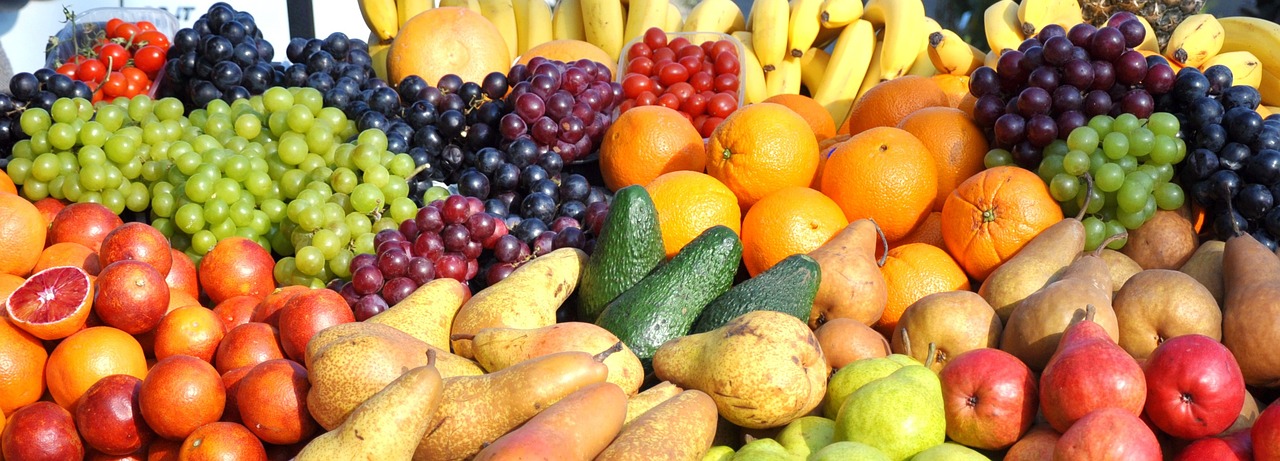
Understanding Color Theory
When it comes to painting, understanding color theory is like having a secret weapon in your artistic arsenal. It’s crucial for every painter to grasp the fundamentals of how colors interact, mix, and influence each other. At its core, color theory revolves around the color wheel, which categorizes colors into primary, secondary, and tertiary hues. Think of the color wheel as your roadmap to creating stunning artworks that pop with vibrancy and depth.
Let’s break it down a bit more. The primary colors—red, blue, and yellow—are the building blocks of all other colors. You can't create these colors by mixing others, but you can mix them to create secondary colors like green, orange, and purple. By combining primary and secondary colors, you can achieve a whole spectrum of tertiary colors, which are created by mixing a primary color with a secondary color. For example, mixing red and orange gives you a warm, inviting hue known as red-orange.
Here’s a quick overview of these color categories:
| Type | Colors |
|---|---|
| Primary Colors | Red, Blue, Yellow |
| Secondary Colors | Green, Orange, Purple |
| Tertiary Colors | Red-Orange, Yellow-Orange, Yellow-Green, Blue-Green, Blue-Purple, Red-Purple |
Now, why is this important? Well, understanding these relationships can help you create color harmony in your paintings. For instance, colors that are opposite each other on the color wheel, known as complementary colors, can create striking contrasts when placed side by side. Imagine the vibrancy of a bright orange against a deep blue—it's eye-catching, isn't it? On the flip side, colors that are next to each other on the wheel, called analogous colors, tend to blend beautifully, producing a more serene and cohesive look.
Moreover, the temperature of colors plays a significant role in setting the mood of your artwork. Warm colors like red, orange, and yellow can evoke feelings of energy and excitement, while cool colors such as blue, green, and purple often convey calmness and tranquility. By mixing these colors thoughtfully, you can manipulate the emotional response of your audience.
In conclusion, mastering color theory is not just about memorizing colors; it's about understanding how they interact and the emotions they can convey. So, the next time you pick up your brush, remember the power of color and how it can transform your artwork from ordinary to extraordinary. Dive into the world of colors, experiment with your palette, and let your creativity flow!
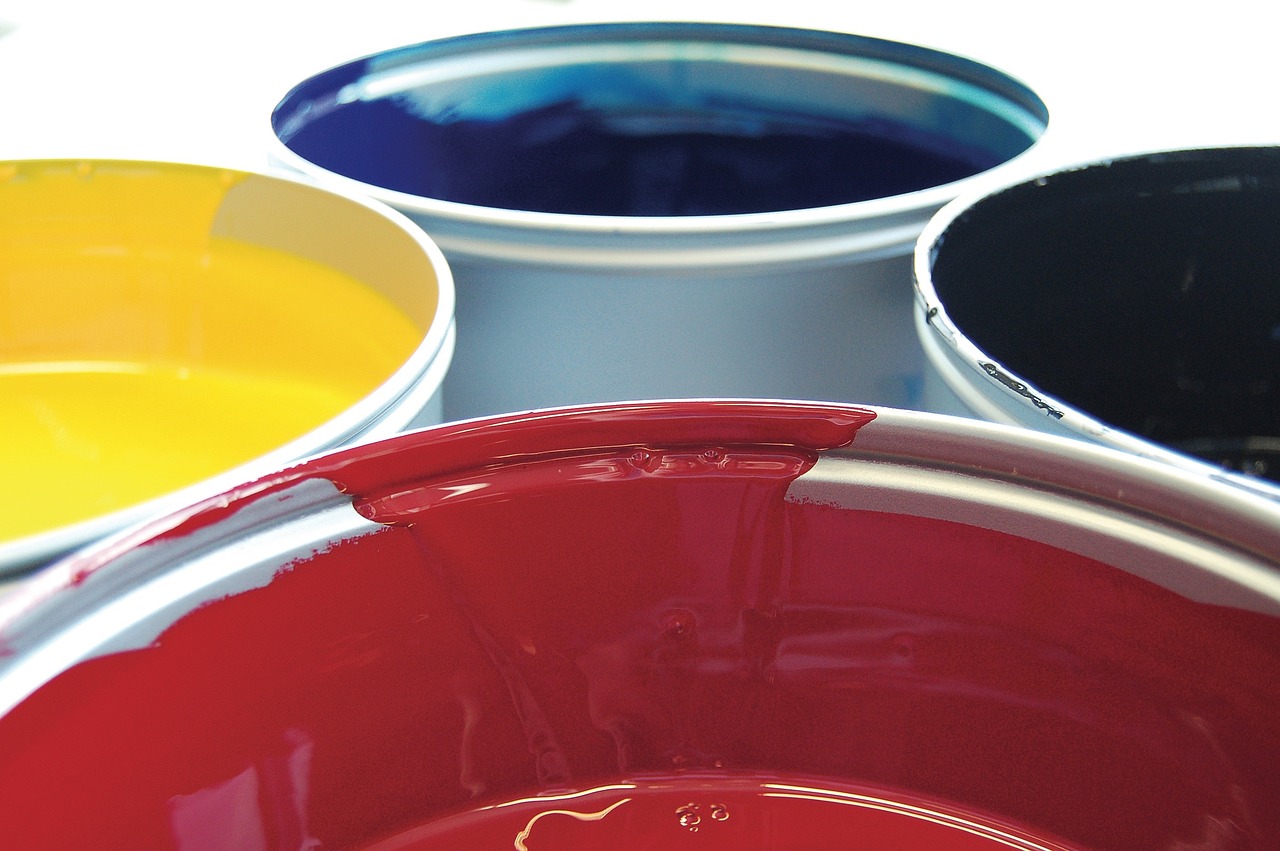
Choosing the Right Paints
When it comes to painting, the choice of paint can make or break your masterpiece. Different types of paints behave uniquely when mixed, and understanding these characteristics is essential for any painter looking to elevate their work. Whether you're a novice just dipping your brush into the world of art or a seasoned pro seeking to refine your technique, knowing the ins and outs of various paint types will help you achieve the desired effects in your artwork. So, let’s dive into the colorful universe of paints and explore the best options for your creative endeavors!
Acrylic paints, for instance, are a popular choice among artists due to their versatility and quick drying times. They can be thinned with water, allowing for a variety of techniques, from watercolor-like washes to thick, impasto applications. However, it’s crucial to note that not all acrylics are created equal. Some are formulated for specific effects, which can influence how they mix with other colors. On the other hand, oil paints are renowned for their rich textures and blending capabilities. They dry slowly, providing artists with ample time to manipulate colors and create stunning gradients. This characteristic makes them ideal for techniques that require blending and layering.
Watercolors, while often seen as a more delicate medium, offer their own unique charm. The transparency of watercolors can produce luminous effects that are difficult to achieve with acrylics or oils. However, mixing watercolors requires a different approach, as their pigments can easily become muddy if not handled with care. Each type of paint has its own personality, and understanding these nuances is key to mastering the art of mixing paints.
To help you navigate through the different types of paints, here's a quick comparison table:
| Type of Paint | Characteristics | Mixing Behavior |
|---|---|---|
| Acrylic Paints | Fast-drying, versatile, water-soluble | Can create a range of textures; dries quickly |
| Oil Paints | Rich texture, slow-drying, solvent-based | Excellent for blending and layering |
| Watercolors | Transparent, delicate, water-soluble | Can easily become muddy; requires careful mixing |
When choosing the right paint for your project, consider the effects you want to achieve. Are you looking for vibrant colors that pop? Acrylics might be your best bet! Do you prefer a more traditional approach with rich, deep tones? Oil paints could be the way to go. And if you're drawn to the ethereal beauty of transparent washes, then watercolors will undoubtedly satisfy your artistic cravings.
Ultimately, the right paint is the one that resonates with your artistic vision and complements your style. Don’t hesitate to experiment with different mediums; sometimes, the best discoveries happen when you step outside your comfort zone. So grab your brushes, mix those colors, and let your creativity flow!
- What is the best paint for beginners? Acrylic paints are often recommended for beginners due to their ease of use and quick drying time.
- How do I prevent colors from becoming muddy? To avoid muddy colors, use clean brushes and palettes, and mix colors gradually.
- Can I mix different types of paints? Mixing different types of paints can be tricky; it's best to stick to one medium for consistent results.
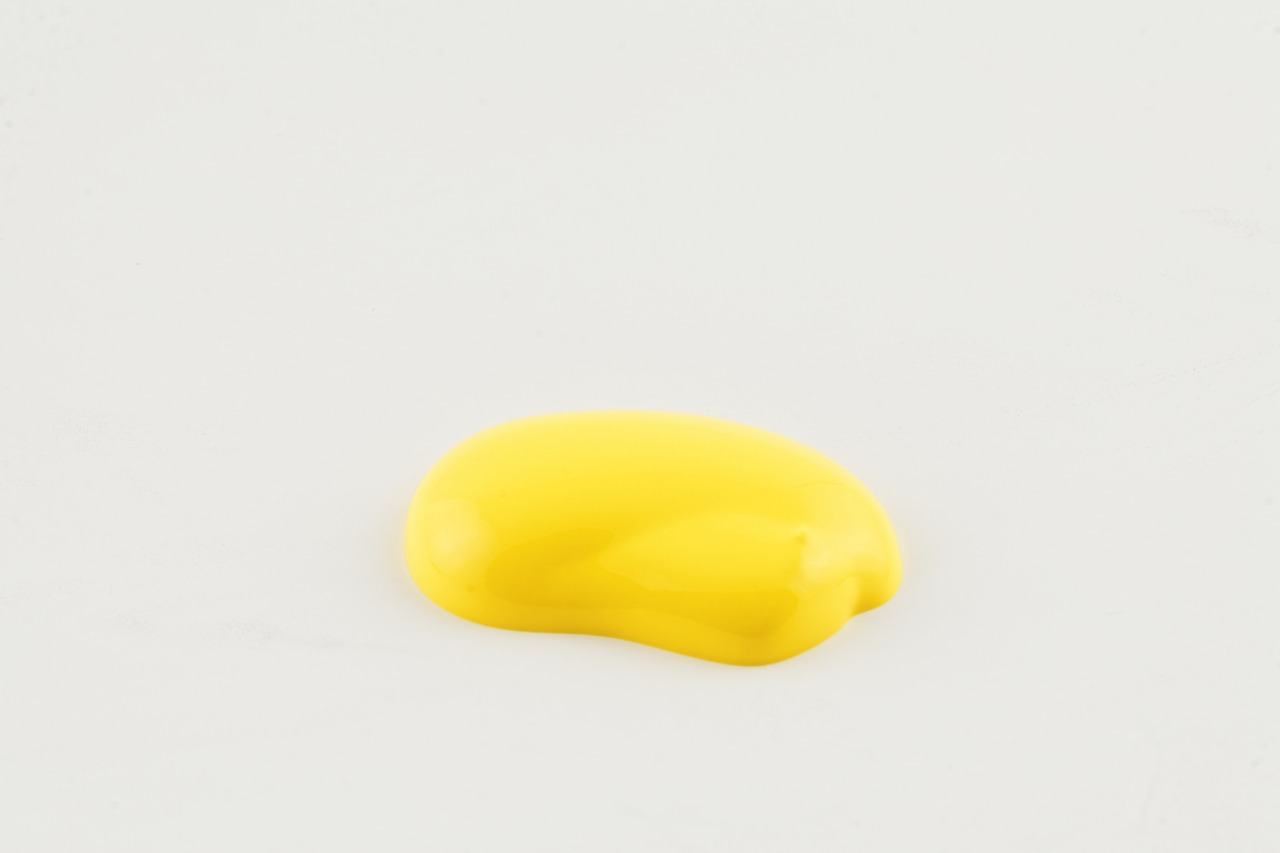
Types of Acrylic Paints
Acrylic paints are a painter's best friend, offering a fantastic blend of versatility and vibrancy. Whether you're a beginner dipping your toes into the world of art or an experienced artist looking to expand your toolkit, understanding the different types of acrylic paints available can significantly elevate your creative process. These paints are water-based and dry quickly, making them a popular choice for artists who want to work efficiently without long wait times. But did you know that there are various types of acrylics, each with its unique properties and uses? Let's dive into the exciting world of acrylic paints!
First up, we have heavy body acrylics. These paints are thick and buttery, allowing for excellent texture and impasto techniques. They hold their shape well, making them perfect for creating three-dimensional effects on the canvas. If you're looking to create bold strokes and textured surfaces, heavy body acrylics are your go-to choice. On the other hand, if you prefer a more fluid application, fluid acrylics are where it's at! These paints are thinner and flow easily, making them ideal for glazing and fine detail work. They dry to a smooth finish and can be used in a variety of techniques, from pouring to airbrushing.
But wait, there's more! Acrylics come in a variety of finishes, including matte, satin, and gloss. Each finish can dramatically affect the final look of your artwork. For instance, matte acrylics provide a non-reflective surface, which is great for softening colors and creating a more subdued effect. In contrast, gloss acrylics can add a vibrant shine, making colors pop and enhancing depth. Choosing the right finish can be just as important as selecting the right color!
Another exciting category is interference and metallic acrylics. These specialty paints contain pigments that create beautiful, shimmering effects. Interference acrylics change color depending on the angle of light, adding an element of surprise to your artwork. Metallic acrylics, on the other hand, provide a rich, lustrous finish that can mimic the look of metal. Mixing these with traditional acrylics can yield stunning results, allowing artists to experiment with texture and color in ways they never imagined.
Ultimately, the type of acrylic paint you choose will depend on your artistic goals and the effects you wish to achieve. Experimenting with different types can not only enhance your skills but also lead to unexpected surprises in your artwork. Just like a chef experimenting with flavors, a painter can create a symphony of colors and textures by mixing and matching various acrylic paints. So, grab your palette and start mixing—your masterpiece awaits!
- What are the main differences between heavy body and fluid acrylics? Heavy body acrylics are thicker and ideal for texture, while fluid acrylics are thinner and better for glazing and detail work.
- Can I mix different types of acrylic paints? Yes! Mixing different types can create unique textures and effects, but be mindful of the drying times and properties of each type.
- What are interference acrylics used for? Interference acrylics are used to create color-shifting effects that change with light, adding depth and intrigue to your artwork.
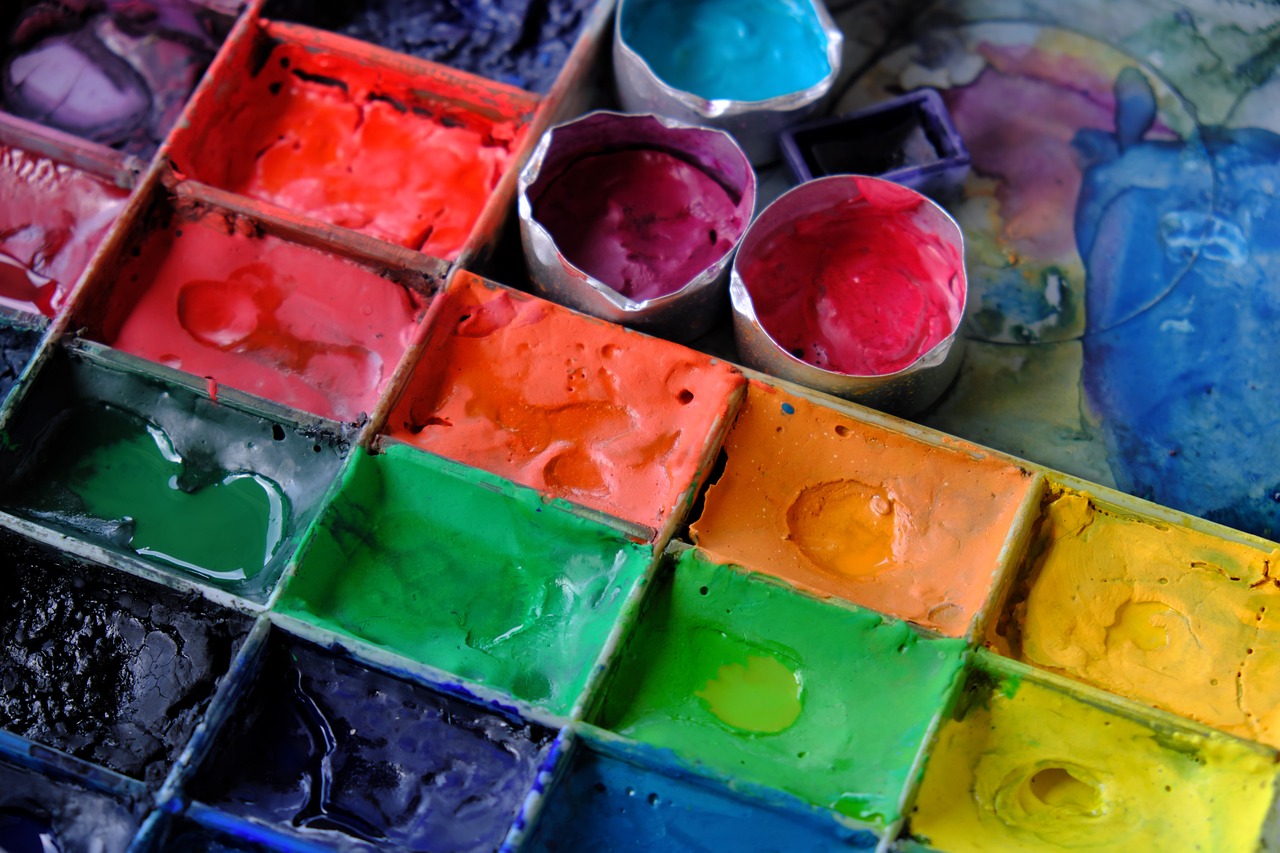
Heavy Body vs. Fluid Acrylics
When it comes to acrylic paints, understanding the difference between heavy body and fluid acrylics is essential for any painter looking to enhance their artwork. Heavy body acrylics are known for their thick, buttery consistency, allowing for rich texture and the ability to hold brush strokes and palette knife marks. This makes them perfect for artists who enjoy creating impasto effects or want to build up layers of paint without losing the vibrancy of the colors. On the other hand, fluid acrylics are much thinner and have a more fluid consistency, making them ideal for techniques that require smooth blending and glazing. The choice between these two types can significantly influence the final outcome of your artwork.
Heavy body acrylics tend to retain their shape once applied, which is fantastic for creating depth and dimension in your work. They are often favored by artists who want to create bold, textured surfaces that invite viewers to engage with the piece. However, the thick nature of these paints can sometimes make it challenging to achieve fine details or delicate washes. To overcome this, artists often mix in a medium or water to adjust the viscosity, but it’s essential to do so carefully to maintain the integrity of the color.
In contrast, fluid acrylics are incredibly versatile and can be used for a variety of techniques, including pouring, glazing, and even airbrushing. Their ability to flow easily makes them suitable for creating smooth gradients and subtle transitions between colors. Artists who prefer a more transparent finish often gravitate towards fluid acrylics, as they allow for layering without completely obscuring the colors beneath. However, it’s worth noting that because they dry quickly, it’s crucial to work efficiently to prevent the paint from becoming tacky.
To summarize the key differences between heavy body and fluid acrylics, consider the following table:
| Feature | Heavy Body Acrylics | Fluid Acrylics |
|---|---|---|
| Consistency | Thick and buttery | Thin and fluid |
| Texture | Retains brush strokes | Smooth and blendable |
| Ideal Techniques | Impasto, layering | Glazing, pouring |
| Drying Time | Slower drying | Faster drying |
Ultimately, the choice between heavy body and fluid acrylics depends on the specific effects you want to achieve in your artwork. Some artists even choose to incorporate both types into their practice, using heavy body acrylics for bold strokes and textures, while employing fluid acrylics for delicate washes and fine details. This dual approach can open up a world of possibilities, allowing for a unique blending of styles and techniques that can truly elevate your painting experience.
Q: Can I mix heavy body and fluid acrylics together?
A: Yes, mixing the two can create interesting textures and effects, but be mindful of the consistency and drying times.
Q: Do heavy body acrylics require special brushes?
A: While you can use regular brushes, stiffer brushes or palette knives work best for heavy body acrylics to achieve the desired texture.
Q: How can I slow down the drying time of fluid acrylics?
A: You can mix in a slow-drying medium or use a stay-wet palette to keep your paints workable for longer periods.
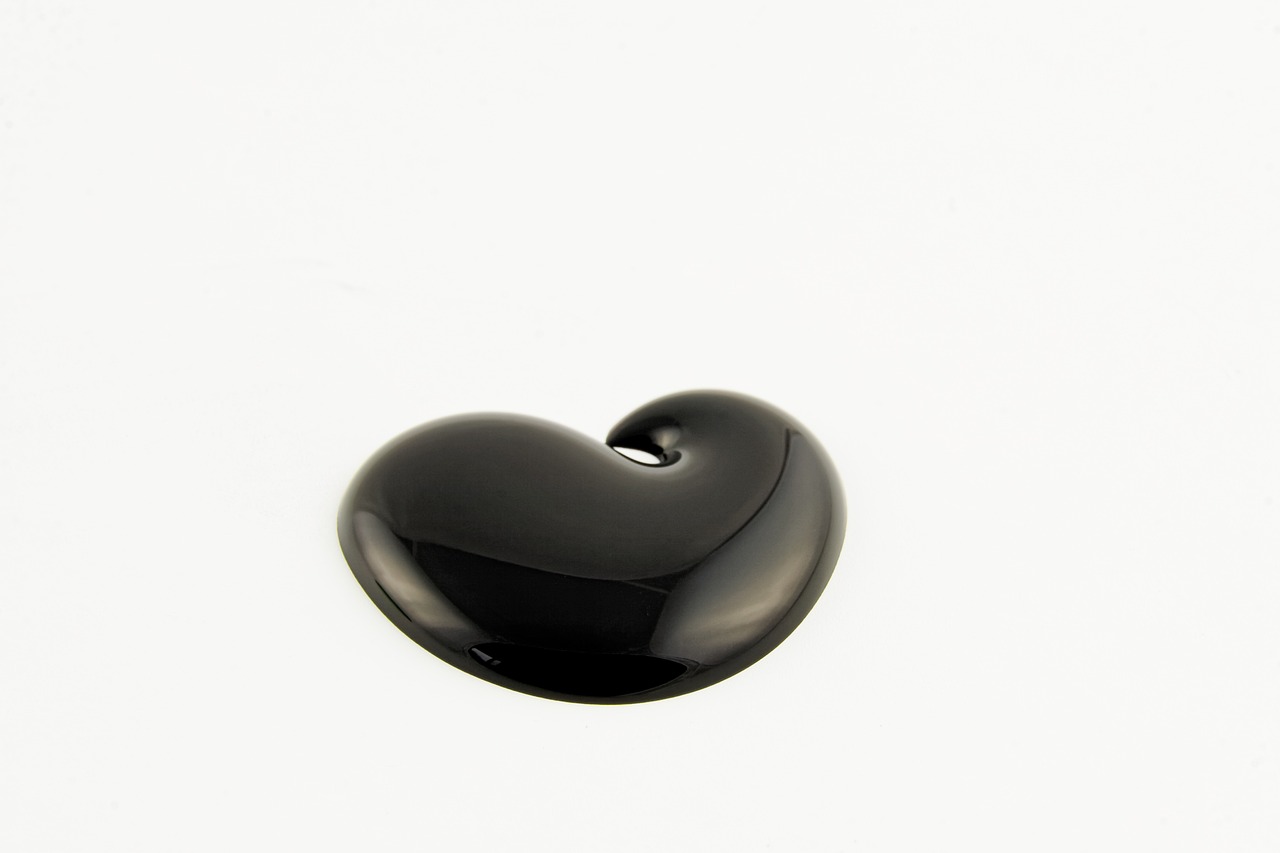
Interference and Metallic Acrylics
When it comes to adding a touch of magic to your artwork, are the secret weapons in a painter's arsenal. These specialty paints are not just your average colors; they shimmer and shift, creating visual effects that can transform a simple canvas into a captivating masterpiece. Imagine painting a serene landscape that glows under the sunlight, or a vibrant abstract piece that seems to dance with light! That's the power of these unique acrylics.
So, what exactly are interference and metallic acrylics? Interference paints contain special pigments that reflect light differently depending on the angle, resulting in a color shift that can range from subtle to dramatic. For instance, a blue interference paint might appear to shift to green or purple as you move around the canvas. On the other hand, metallic acrylics incorporate fine metallic particles that give a lustrous finish, reminiscent of polished metal or shimmering jewels. These paints are perfect for adding depth and dimension to your artwork, making them stand out in any setting.
Mixing interference and metallic acrylics can be a bit tricky, but with the right techniques, you can create stunning effects. Here are some tips to help you get the most out of these paints:
- Layering: Apply a base color first, then layer interference or metallic paints on top. This technique enhances the depth and complexity of your colors.
- Transparency: Use a glazing medium to thin your metallic or interference paints. This will allow the base color to show through while still adding that beautiful shimmer.
- Experiment: Don't be afraid to mix these paints with other colors. The results can be surprising and often lead to unique shades that you won't find in any standard palette.
It's also essential to consider the application method. Brushes can work well, but for a more fluid and blended look, try using a palette knife or even your fingers! The tactile experience can add an extra layer of creativity to your process. Remember, the key to mastering these paints is practice. The more you play with them, the more you'll understand how they interact with light and each other.
In conclusion, interference and metallic acrylics are fantastic tools for artists looking to add a little extra flair to their work. Whether you're aiming for a subtle shimmer or a bold, reflective finish, these paints can help you achieve your artistic vision. So, grab your brushes and let your creativity flow!
Q: Can I mix interference acrylics with other types of paints?
A: Yes! Interference acrylics can be mixed with other acrylics, but be mindful of how they interact. Experiment to find the best combinations for your projects.
Q: How do I clean my brushes after using metallic acrylics?
A: Clean your brushes promptly with soap and water, as the metallic particles can dry and harden, making them difficult to remove later.
Q: Are interference and metallic acrylics suitable for outdoor paintings?
A: While they can be used outdoors, it's essential to apply a protective varnish to shield the paints from UV rays and moisture, which can dull their shine over time.

Exploring Oil Paints
When it comes to painting, oil paints hold a special place in the hearts of artists. Their rich textures and vibrant colors can transform a simple canvas into a breathtaking masterpiece. But what exactly makes oil paints so unique? For starters, they are made from pigments suspended in oil, typically linseed oil, which allows for a smooth application and a stunning depth of color. This characteristic enables artists to create intricate details and subtle blends that are often difficult to achieve with other mediums.
One of the most appealing aspects of oil paints is their blending capabilities. Unlike acrylics, which dry quickly, oil paints remain wet for an extended period, allowing for more time to work on your piece. This extended drying time can be a double-edged sword, though. While it provides the opportunity for gradual blending and layering, it also requires careful planning to avoid muddy colors. Understanding how to manipulate this drying time is key to mastering the medium.
Another fascinating feature of oil paints is their color depth. The oil base allows for a richness that can be hard to replicate with other paints. When mixed properly, oil paints can produce a wide range of hues, offering artists the ability to create everything from soft pastels to intense, vibrant colors. The interaction of light with the oil creates a luminous effect, making your artwork appear alive and dynamic. This is particularly beneficial when painting subjects like landscapes or portraits where light plays a crucial role in the overall composition.
To help you navigate the world of oil paints, here's a quick overview of their key properties:
| Property | Description |
|---|---|
| Drying Time | Slow, allowing for extended blending and layering. |
| Texture | Rich and buttery, ideal for creating depth. |
| Color Vibrancy | High, due to the oil base and pigment concentration. |
| Mixing Capability | Excellent, with the ability to create a vast range of shades. |
When mixing oil paints, it’s essential to understand the role of mediums. Mediums can alter the properties of the paint, affecting everything from drying time to sheen. For example, adding linseed oil can enhance glossiness and flow, while turpentine can thin the paint for more transparent applications. Experimenting with different mediums can open up a whole new world of possibilities in your artwork.
As you explore oil paints, don’t forget about the importance of color mixing. Mixing colors directly on your palette or canvas can yield stunning results. However, it’s crucial to remember that some colors can dominate others, leading to unexpected outcomes. A good rule of thumb is to start with small amounts of paint and gradually add more until you achieve the desired hue. This way, you can avoid the dreaded “muddy” colors that can occur when mixing too many pigments together.
In conclusion, oil paints offer an incredible range of possibilities for artists willing to experiment and learn. Their unique properties allow for unparalleled depth, texture, and vibrancy, making them a favorite among many painters. Whether you’re a seasoned artist or just starting, understanding the nuances of oil paints will undoubtedly enhance your creative journey.
- What is the best way to clean brushes after using oil paints? Use a solvent like turpentine or mineral spirits to clean brushes thoroughly. Follow up with soap and water to remove any residue.
- Can I mix oil paints with acrylics? It’s generally not recommended to mix oil paints with acrylics, as they have different drying times and bases, which can lead to issues with adhesion.
- How can I speed up the drying time of oil paints? You can use fast-drying mediums or paint in thin layers to help speed up the drying process.
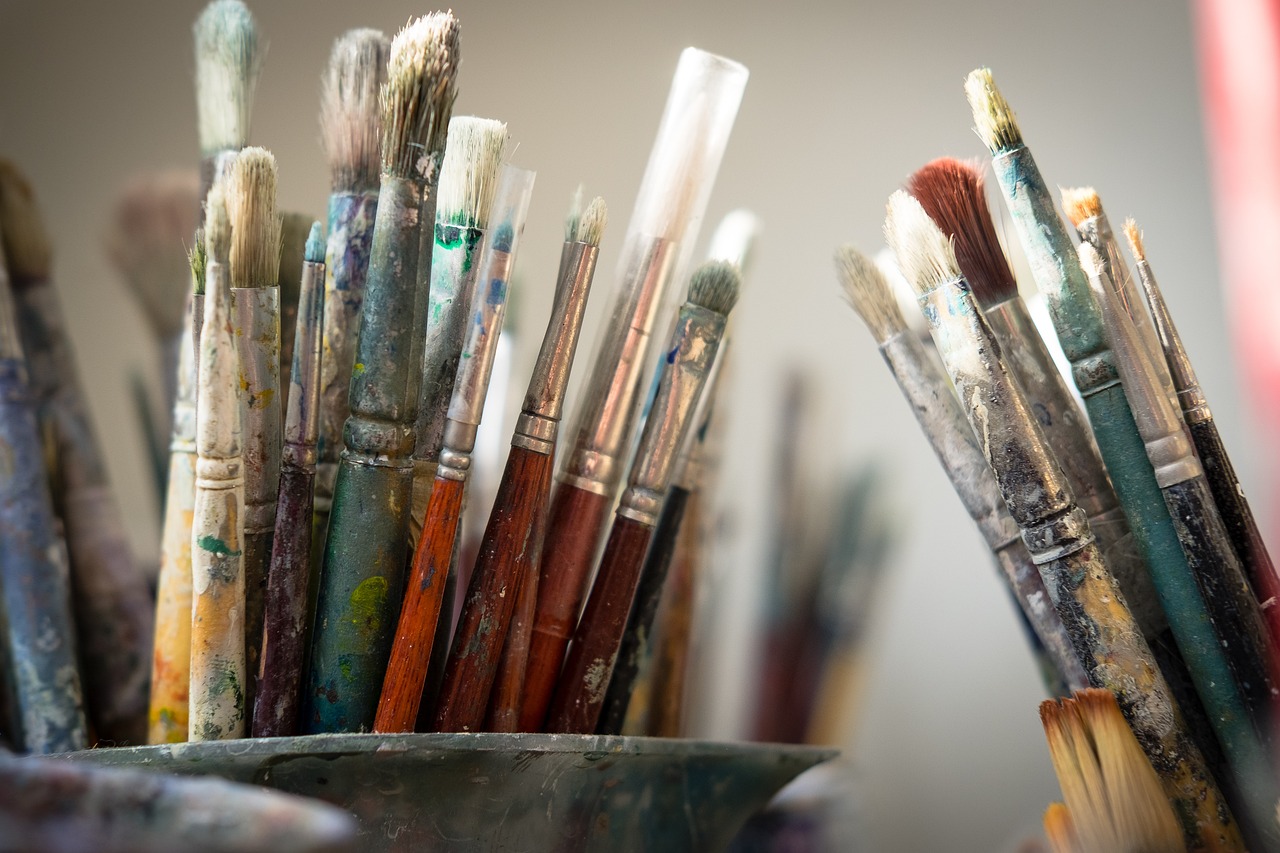
Techniques for Mixing Colors
Mastering the art of mixing colors is like learning to play an instrument; it requires practice, patience, and a bit of creativity. When it comes to painting, the ability to create the perfect hue can make or break your artwork. Imagine standing in front of a blank canvas, armed with a palette of vibrant colors, ready to bring your vision to life. But how do you transform those colors into something truly spectacular? Let's dive into some essential techniques that every painter should know.
One of the most effective methods for mixing colors is known as palette mixing. This technique involves blending colors on your palette before applying them to the canvas. It allows you to see how colors interact with one another in a controlled environment, giving you the freedom to experiment without the pressure of making mistakes on your artwork. To get started, simply squeeze out a small amount of your chosen colors onto your palette, and use a palette knife or brush to blend them together. You can create a myriad of shades and tones this way, making it easier to achieve your desired effect. Remember, the key to successful palette mixing is to start with small amounts of paint; you can always add more if needed!
Another exciting technique is the wet-on-wet method, which is perfect for those who love spontaneity in their painting. This technique involves applying wet paint onto wet paint, allowing for beautiful, fluid transitions and blending directly on the canvas. Picture this: you’ve just laid down a vibrant blue sky, and before it dries, you add soft strokes of white to create fluffy clouds. The colors meld together seamlessly, resulting in a dreamy atmosphere. To master this technique, it’s essential to work quickly and with confidence. Use a brush that holds a good amount of paint and water, and don’t be afraid to layer colors to achieve depth and dimension.
For those who enjoy a structured approach, consider using a color wheel as your guide. The color wheel is an invaluable tool that helps you understand the relationships between colors. It consists of primary, secondary, and tertiary colors, and by knowing how they interact, you can create harmonious blends. For instance, mixing complementary colors can create stunning shadows and highlights, while analogous colors can yield smooth transitions. As you become more familiar with the color wheel, you’ll find it easier to predict how different colors will mix, leading to more successful outcomes in your artwork.
Additionally, don’t underestimate the power of layering. This technique involves applying multiple layers of paint to build up color intensity and texture. By starting with a base layer and gradually adding more colors, you can create a rich, complex surface that captures the eye. Think of it like building a cake; each layer adds flavor and depth. Just remember to allow each layer to dry before applying the next to avoid muddying your colors.
Finally, it’s crucial to keep your tools clean and organized. A clean palette and brushes can significantly affect your mixing results. Residual paint from previous sessions can alter the colors you’re trying to create, leading to unexpected and often undesirable outcomes. So, make it a habit to clean your brushes regularly and keep your palette tidy. This small step can make a big difference in the quality of your work.
- What is the best way to mix colors for beginners? Start with palette mixing, as it allows you to experiment without the pressure of applying to the canvas. Use small amounts of paint to avoid waste.
- Can I mix acrylic and oil paints together? No, acrylics and oils have different bases and do not mix well. It’s best to stick with one medium at a time.
- How can I create a specific color I have in mind? Use a color wheel to find out which colors you need to mix. Experiment with small amounts until you achieve the desired shade.
- Is it necessary to let layers dry before applying more? Yes, allowing each layer to dry helps prevent colors from muddying and allows for clearer, more vibrant results.
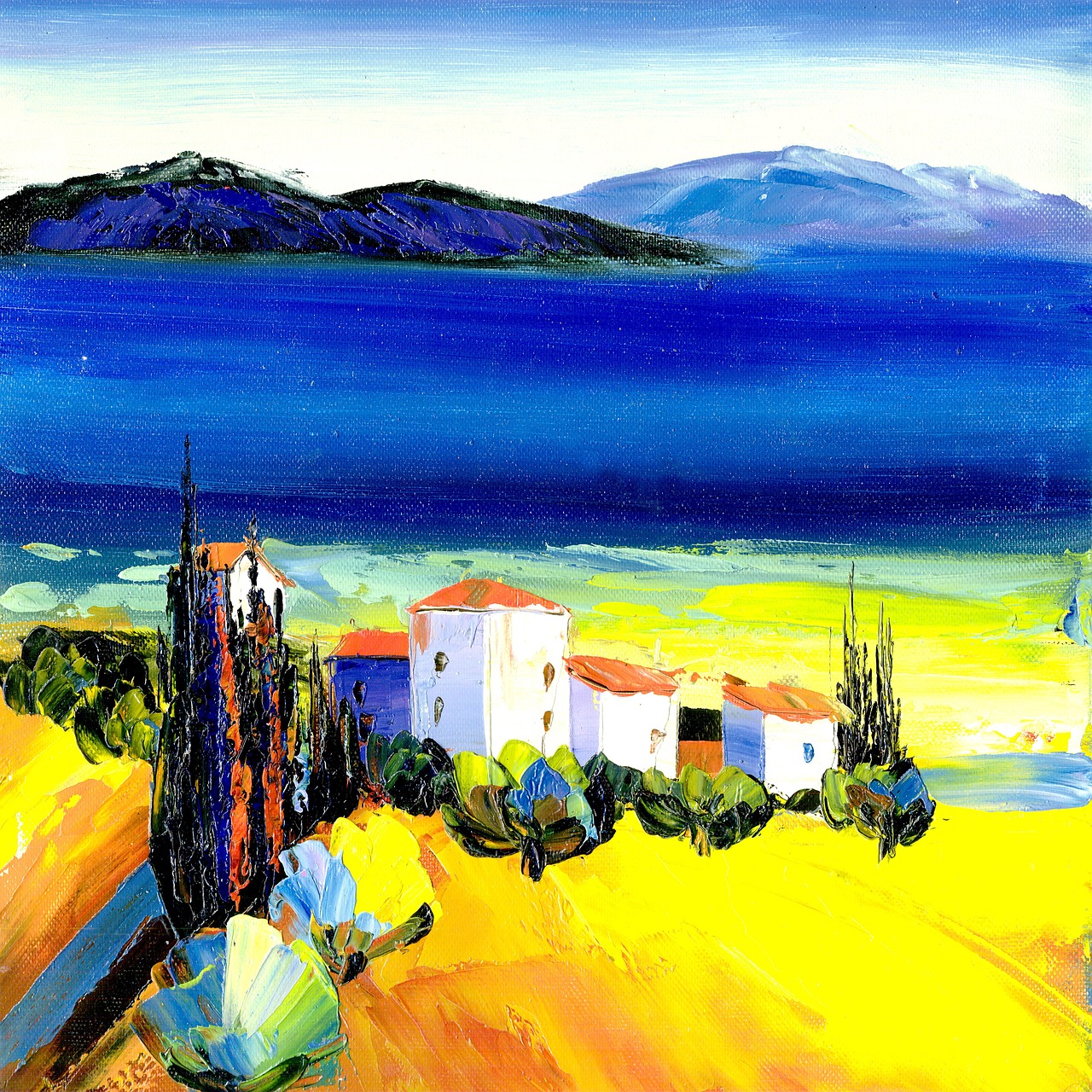
Palette Mixing Methods
When it comes to painting, one of the most essential skills you can develop is mastering . This technique allows you to blend colors before they even touch the canvas, giving you control over the hues and shades you want to create. Imagine standing in front of your palette, a vibrant array of colors waiting to come alive under your brush. The key is to understand how to manipulate these colors to achieve the desired effects. By mixing on the palette, you can create smooth transitions, rich gradients, and even entirely new colors that can elevate your artwork to new heights.
One effective method is the two-color mixing technique, where you take two primary colors and blend them to create a secondary color. For example, mixing red and blue will yield purple. This method is not just limited to primary colors; you can explore combinations with secondary and tertiary colors as well. The beauty of palette mixing lies in its versatility. You can also use a triadic color scheme—selecting three colors that are evenly spaced on the color wheel. By mixing these colors together, you can create a dynamic and vibrant palette that can make your artwork pop.
Another popular technique is the layering method, where you start with a base color and gradually add layers of different colors on top. This method allows for depth and complexity in your work. For instance, if you begin with a light blue base and layer darker blues and greens, you can achieve a stunning ocean effect. The key is to let each layer dry before adding the next to avoid muddying your colors. You can also use a palette knife for mixing, which can create interesting textures and effects that a brush might not achieve.
To help you visualize these methods, here’s a simple table outlining the different palette mixing techniques:
| Technique | Description | Best For |
|---|---|---|
| Two-Color Mixing | Combining two colors to create a new hue. | Creating secondary colors. |
| Triadic Mixing | Using three evenly spaced colors on the color wheel. | Dynamic and vibrant palettes. |
| Layering | Building up colors in layers for depth. | Creating complex textures. |
In conclusion, mastering palette mixing methods is all about experimentation and practice. Don't be afraid to play with your colors and see what happens. The more you mix, the more you'll understand how colors interact with each other, and soon enough, you'll be creating masterpieces that reflect your unique artistic vision. So grab your palette, mix those colors, and let your creativity flow!
Q: What is the best way to clean my palette after mixing?
A: It's best to clean your palette with warm, soapy water immediately after use. For acrylics, you can use a plastic scraper to remove dried paint, while oils may require a solvent like turpentine.
Q: How do I know if my colors are too muddy?
A: If your colors appear dull or lack vibrancy, you may have overmixed or used too many colors together. Try to limit your palette to a few complementary colors to maintain clarity.
Q: Can I mix different types of paint on the same palette?
A: Mixing different types of paint (like acrylics and oils) on the same palette is generally not recommended as they have different drying times and properties. It's best to keep them separate for optimal results.
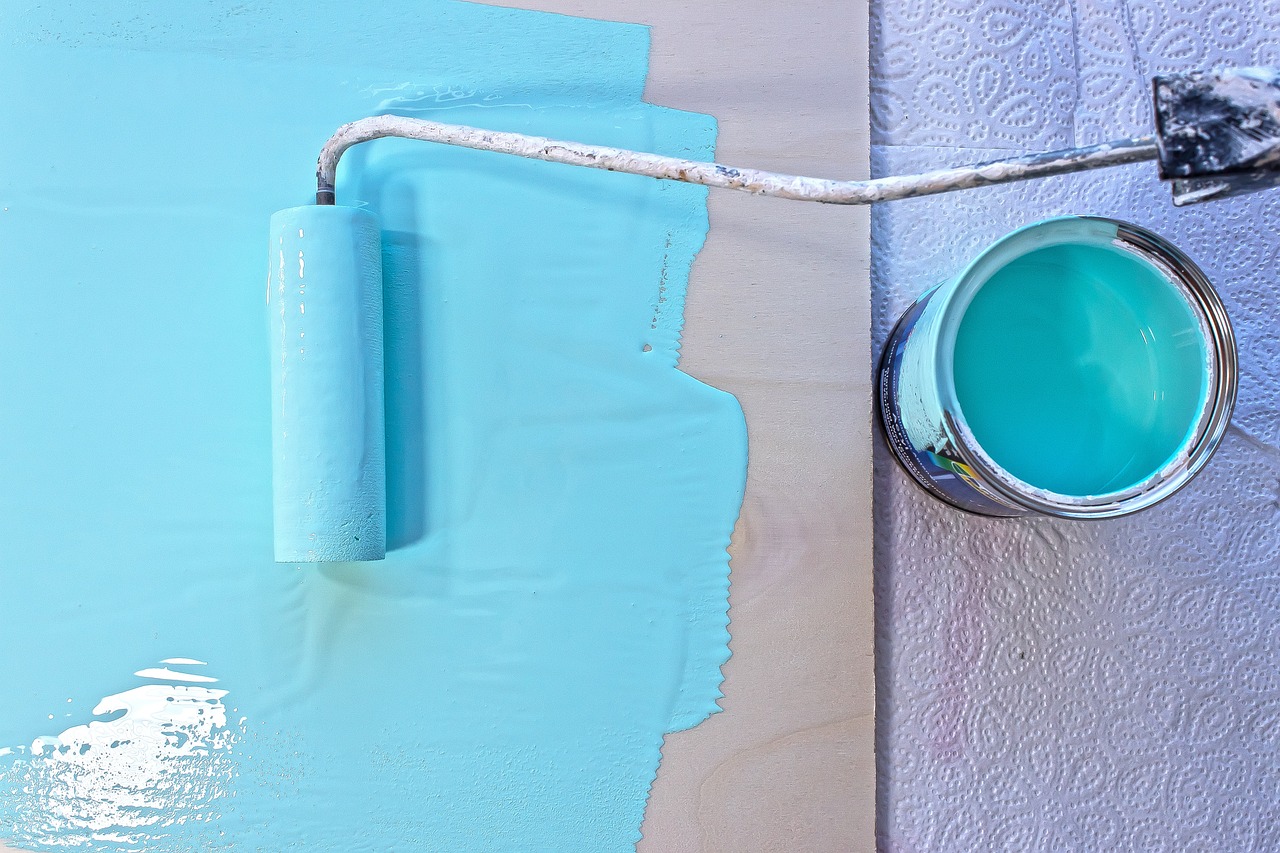
Wet-on-Wet Technique
The is like a dance of colors on your canvas, a method that allows you to blend hues directly while the paint is still wet. Imagine a painter's palette bursting with vibrant colors, each waiting for its moment to shine. This technique is perfect for creating soft edges and smooth transitions, making it a favorite among artists who love to capture the essence of spontaneity in their work. But how do you master this exhilarating method? Let’s dive in!
First, it’s essential to understand that the wet-on-wet technique requires a certain level of preparation. You need to work quickly, as the paint must remain wet for blending to occur. Start by applying a base layer of paint on your canvas, ensuring it covers the area you want to work on. This initial layer acts as a foundation, allowing subsequent colors to merge seamlessly. Think of it as laying down a rich, velvety carpet before placing your colorful furniture on top.
Once your base layer is ready, grab your brush and dip it into another color. The magic happens when you apply this new color onto the wet surface. As the brush glides over the canvas, the colors will blend and swirl together, creating stunning effects that are difficult to achieve with dry paint. It’s like mixing frosting on a cake—each stroke adds a new layer of flavor and depth!
One of the best things about the wet-on-wet technique is its versatility. You can use it to create various effects, from soft, dreamy landscapes to bold, abstract compositions. For instance, if you’re painting a sky, you might start with a light blue base and then add touches of pink and purple, letting them blend together to create a stunning sunset. The key is to keep your brushwork loose and fluid, allowing the colors to interact naturally.
However, there are some tips to keep in mind to ensure your wet-on-wet experience is as smooth as possible:
- Use high-quality paints: The better the paint, the more vibrant and blendable your colors will be.
- Work in small sections: Focus on one area at a time to prevent the paint from drying out before you can blend it.
- Experiment with brushes: Different brushes can create various textures and effects, so don’t hesitate to try round, flat, or even fan brushes.
Lastly, don’t be afraid to embrace the unexpected! The wet-on-wet technique is all about spontaneity and exploration. Sometimes, the most beautiful results come from happy accidents. So, grab your brushes, let your creativity flow, and enjoy the vibrant world of wet-on-wet painting!
Q: Can I use the wet-on-wet technique with acrylic paints?
A: Absolutely! Acrylics are great for this technique, especially if you work quickly before they dry.
Q: How do I clean my brushes when using this technique?
A: Quickly rinse your brushes in water to prevent the paint from drying on them. This is crucial for maintaining the integrity of your colors.
Q: What surfaces are best for wet-on-wet painting?
A: Canvas, watercolor paper, and even wood panels can be used effectively. Just ensure the surface can handle wet applications.
Frequently Asked Questions
- What is the importance of understanding color theory for painters?
Understanding color theory is crucial for painters because it helps them create harmonious color combinations and enhances their ability to mix paints effectively. By grasping the concepts of primary, secondary, and tertiary colors, artists can make informed decisions that elevate their artwork.
- How do different types of paints affect mixing?
Different types of paints, such as acrylics, oils, and watercolors, have unique properties that influence how they mix. For instance, acrylics dry quickly and can be layered, while oils provide a longer working time for blending. Knowing these characteristics allows painters to choose the right medium for their specific projects.
- What are heavy body and fluid acrylics, and how do they differ?
Heavy body acrylics are thick and buttery, allowing for texture and impasto techniques, while fluid acrylics are more liquid and ideal for smooth applications and glazing. Understanding these differences helps artists select the right type for their desired effects in their paintings.
- Can I mix interference and metallic acrylics with other paints?
Yes, you can mix interference and metallic acrylics with other paints, but it requires careful consideration. These specialty paints can create stunning effects, but mixing them improperly may dull their unique qualities. Experimentation is key to finding the right balance!
- What techniques can I use for mixing colors effectively?
Some effective techniques for mixing colors include palette mixing, where colors are blended on a palette before application, and the wet-on-wet technique, which allows for spontaneous blending directly on the canvas. Each method has its advantages, so it’s worth trying them out to see which works best for you!
- How does the wet-on-wet technique work?
The wet-on-wet technique involves applying wet paint onto wet paint, allowing for seamless blending and soft edges. This method is great for creating dynamic compositions, as it encourages spontaneity and movement in your artwork.



















